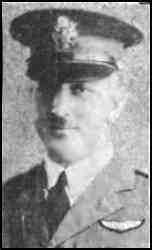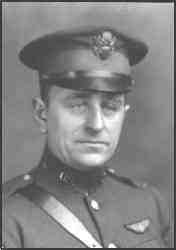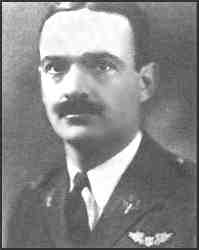


From The Dayton Herald
DEC 13, 1935
Lees Collection
Courtesy of Scott Hamilton
@ The AERODROME
| CATERPILLAR CLUB "INSPIRATION" COMES BACK TO SCENE OF TRIUMPH |
 |
 |
 |
||
| Major A. Gilkeson From The Dayton Herald DEC 13, 1935 |
Walter E. Lees Lees Collection |
Capt. Frank O'D. Hunter Courtesy of Scott Hamilton @ The AERODROME |
|
VISITS WRIGHT FIELD Walter E. Lees, former Daytonian, co-holder of the world's non-refueling endurance record for airplanes, one of the men in "at the birth" of the Caterpillar Club, composed of emergency parachute jumpers, and himself maker of one of the record low emergency jumps, is back in Dayton, witnessing magneto tests this week at Wright Field. Mr. Lees left Dayton in 1925 to take a position with the Packard Diesel aircraft engine. He had been a civilian test pilot and instructor at McCook Field. In 1924, Lees jumped from his disabled airplane near the old Johnson airport, on the Wilmington pike, at an altitude of less than 150 feet, and saved his life by being one of the first men in the United States to use a parachute in escaping from an airplane in distress. It was one of the record low jumps, equalled by not more than four or five men since---one of them that of Captain Frank O'D. Hunter, who escaped from the airplane in which Captain Hugh Elmendorf was killed near Wright field several years ago. "The last time I looked at the altimeter of my ship before getting ready to jump, it registered 250 feet," Lees said yesterday while discussing the feat. "It was falling rapidly when I bailed out. I was very lucky to escape alive, I suppose." Culminating his research work on Diesel aircraft engines for the Packard company, Lees and Fred Brossy set the world's endurance record for non-refueling when they remained in the air in a Packard Diesel-powered airplane 84 hours and 32 minutes in the spring of 1931 at Jacksonville, Fla. In 1925, at the Mitchel Field, N. Y., air races, Lees suggested to Maurice Hutton and Verne Timmerman, aviation editor and photographer, respectively, for The Herald, that the Caterpillar club, which with H. St. Clair, of Wright field, they had just founded, use a gold caterpillar as its emblem. This suggestion was adopted, and new members of the mythical organization are still presented with the gold emblems by the Irvin Airchute company, one of whose officials agreed during the air races to furnish them. Hutton and Timmerman, it will be recalled, were killed on the way back to Dayton from the races, when the army airplane in which they were passengers crashed in flames near Uniontown, Pa. Lees said yesterday he was happy to be back in Dayton, since he lived and flew here for so many years, and said he was having a good time renewing old acquaintances. He is now associated with the Scintilla Magneto corporation, and has his offices in Detroit, Mich., where he handles their middle-western business. Captain Frank O'D. Hunter, formerly of Wright field, is tied with Major A. Gilkeson, also a former local officer, for the doubtful honor of jumping at the least altitude. Captain Hunter jumped at 100 feet when the airplane in which he and Captain Hugh Elmendorf, who was killed in the crash, spun into the ground near Osborn on Friday, January 13, 1933. Major Gilkeson jumped at 100 feet in Maryoand in 1927. Captain Hunter jumped twice before this latest, once in 1925, at McCook field, when he became the eighteenth member of the club, and again in 1926, at Selfridge field, Mich. He is also a World war ace, having shot down more than the required five German planes. Editors Note: The photo of Frank Hunter was kindly supplied by Scott Hamilton of THE AERODROME. You can find a comprehensive biography of WW I Aces on this outstanding site, including that of Capt. Frank Hunter. 

|